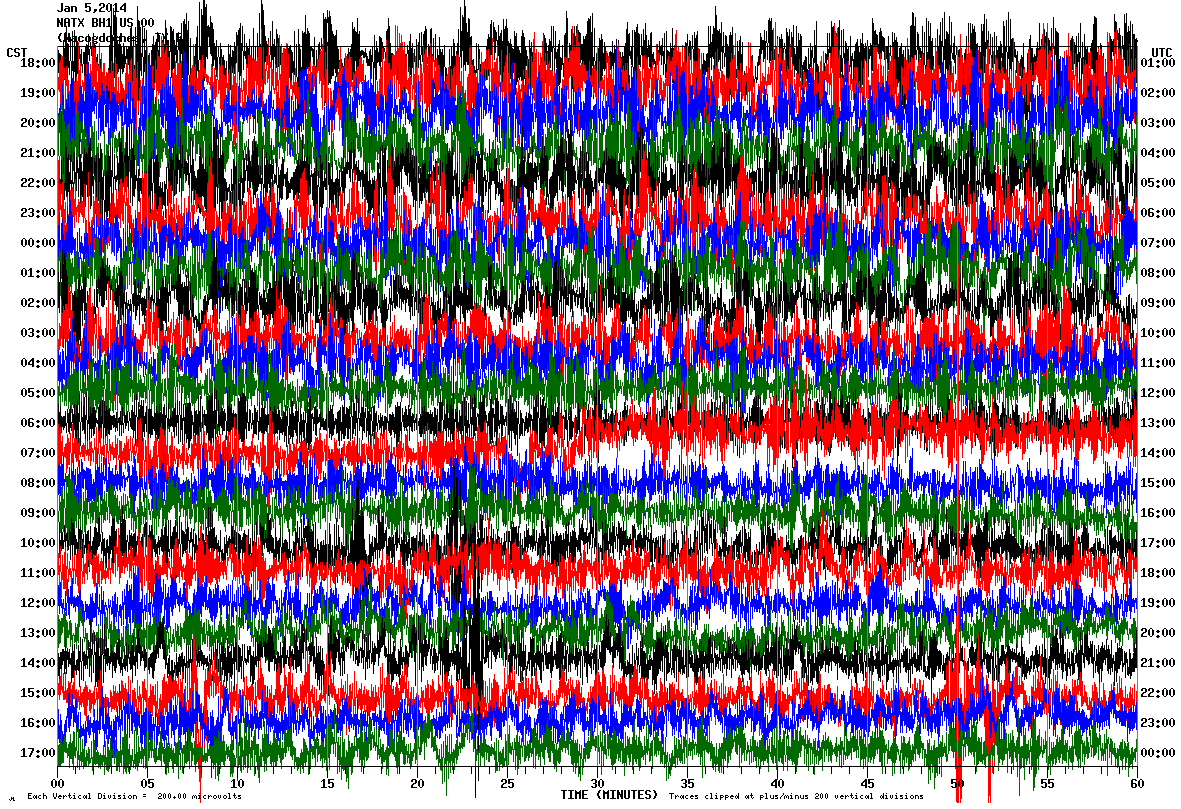

Earthquakes have been linked to hydraulic fracturing, or “fracking,” for years now. To put it simply, the injection of millions upon millions of gallons of waste fluids from fracking operations greases geologic faults deep underground.
When Arkansas experienced a whopping 157 earthquakes in 2011 seemingly out of blue — with 98 percent of them occurring just a mile or so from one of a handful of underground injection sites — folks asked questions and researchers answered: fracking waste disposal was to blame.
Of course, North Texans had already been rocked by then, with UT and SMU researchers concluding that the quakes there were triggered by industry:
Prior to 31 October 2008, there had been no local felt earthquakes known in Dallas and Tarrant Counties, which have been settled since about 1850. About seven weeks before the DFW quakes began, injection commenced in a SWD well only a few hundred meters from DFW epicenters and with an injection depth of 3.1–4.1 km. This approaches the 4.4–4.8 km we determined for the 11 earthquakes recorded by the SMU temporary local network. Th ese earthquakes and the SWD well are within about 1 km of a mapped subsurface fault which trends in nearly the same direction as the alignment of epicenters.
More recently, this “scary new study” examined quakes of industrial origin up in Ohio, finding a single disposal site was to blame for 167 “distinct” earthquakes in and around Youngstown.
Of that site Molly Redden writes in the New Republic:
It stored, over its life, nearly half a million barrels of the wastewater cocktail—including thickeners, drilling lubricants, and saltwater—forced to the surface of the earth by the fracking process. … The 9,200 foot deep well, known as Northstar 1, opened in 2010, two weeks before Youngstown experienced its first quake—ever. From then until frackers stopped using the well at the end of 2011, about 12 tremors struck the area every month. And while Youngstown residents could not feel most of these, the very last injection into the well—the Ohio Department of Natural Resources had ordered the well be shut down—happened a day before an earthquake that registered a magnitude 3.9 struck the area.
In other words, this stuff is old news. Or it should be. So how the Texas Railroad Commission can continue to deny the link as they did at a recent meeting in Azle, Texas, is hard to comprehend. No wonder, as a recent Fort Worth Star-Telegram headline blared, attendees were “frustrated by the lack of answers” after another spate of North Texas quakes last month.
I don’t often see news accounts address the issue of earthquakes from a historic perspective, so I got curious this morning and wound up making a few charts drawing on data maintained by the UT Institute for Geophysics. The first shows the number of recorded Texas earthquakes by decade along with the number of larger (greater than Magnitude 5) quakes; the second shows quakes year to year for the last 50 years along with average magnitudes per year.

The obvious takeaway is that quakes are on the upswing in Texas part-and-parcel with the explosion of new fracking and underground disposal of fracking wastes. The largest shale plays in the state have occurred in North Texas in the Barnett, which began to take off in 2006/2007 (right), and the Eagle Ford in South Texas, which, primarily about oil, lagged by a few years (below right).

Texas has a history of natural quake activity, particularly in West Texas and the Panhandle, according to the UT Institute for Geophysics, where the link between fracking and earthquakes is treated as another fact of life.
Scientists, the UTIG website reads, now “recognize that some Texas earthquakes may be caused by human activity. A few earthquakes have occurred within or along the boundaries of producing oil and gas fields; earthquakes are also sometimes apparently triggered by the disposal of fluid wastes in deep wells.
“Of course, it is seldom possible to prove unequivocally that any particular earthquake is caused by humans. However, in some parts of Texas the majority of earthquakes epicenters occur near active petroleum fields or injection wells. Along the Gulf Coast and in northeast Texas these include a few earthquakes with magnitudes between M4 and M4.8.”
It seems the only thing left to address now is how we’ll sensibly cut through the maze of guarded liabilities so that the oil and gas companies will be forced to pay for the damages they create and if underground injection can be done safely at all.










